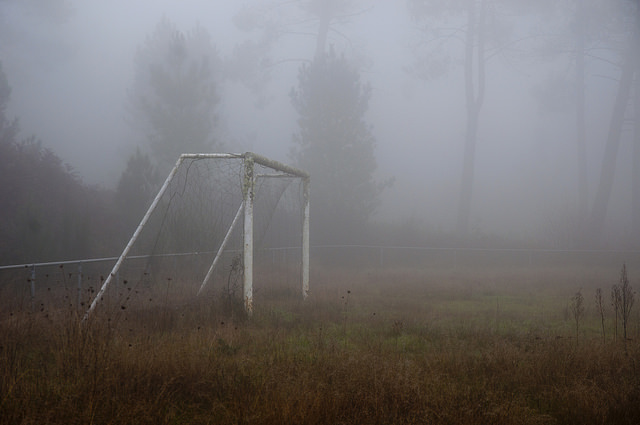
“Many people look forward to the New Year for a new start on old habits.” ~Anonymous
You’ve probably heard it before—if not, you’ve likely experienced it yourself: New Year Resolutions just don’t work!
I have a different take.
Very few people actually set New Year Resolutions. In fact, I’ll even go so far as to say that very few people have ever set a New Year’s Resolution.
Certainly, countless millions have wished for better outcomes in the New Year. They hope New Year Dreams come true. Many even initiate a considerable amount of effort in their early pursuit.
But that’s not to say they actually resolve to reach their goals.
New Year Attempts
Too many people spend their time thinking about what they wish they had or wish they did or wish they were. They set a goal, encounter an obstacle, then go home and watch TV instead of sticking to the day-to-day, month-by-month and year-after-year work of realizing the goal.
You and I see it every January 1st.
More joggers and bikers on the street and more people packing the gym than usual. And then come March or April, the joggers and bikers start to disappear from the streets and active gym membership falls to the typical crowd.
Then come all the posts and comments and memes condemning the art of goal-setting as an arcane device that will hurt more than help your pursuit of a happy, fulfilled life.
It’s like the man who saw a cake in a magazine, thought he could bake his own, mixed a few ingredients together, set the bowl on the table, then complained on FB that since his mixture never developed into a cake, that cake-making must be a scam invented by the malevolently dishonest cake-industry.
It doesn’t matter how badly the man wants the cake. Since he never did what cake-makers do, he can’t expect the result cake-makers get.
Period.
So what is the missing ingredient to most people’s failed attempts at baking their own New Year Resolutions?
The Missing Ingredient
The answer is in the name, really.
A New Year Resolution is, well, a resolution. You resolve to do whatever the object of your resolution is.
When you resolve to do a thing, you make a decision to act, to go all the way, come hell or high water. It’s something you’re committed to accomplish, having firmly decided to see it through to the end.
If you stumble, you get back up.
If you fall off the wagon, you have the next go at it. And then the next. And the next. And the next.
Surrender is not an option to the person resolved to a particular end.
That is what it means to resolve to do something, after all. You climb the mountain until you get to the top or you fall off a cliff and die.
Whether you forget, or it’s too hard, or you’re sick and tired, is irrelevant. You are simply going to continue until it’s done. If you have to stop the climb to build muscle or endurance or acclimate to the altitude or purchase better gear, you work on what needs working on, then continue undeterred up the mountain again.
A Failed Resolution is not the Fault of Resolutions
To be resolved to something is a reflection of your inner core, not the nature of resolving.
If you fail to run a mile in 5 minutes, it’s not because mile-running doesn’t work. It’s because your legs and heart and body haven’t been conditioned to run that far or fast yet.
“Yet” is the operative word in that statement, by the way.
That’s part of being resolved—if you can’t run the mile yet, you start building your capacity. It’s not about trying. There are millions of people who try millions of things every day, but quit short of their goal not because resolutions don’t work, but because they were never truly resolved to accomplish what they merely wanted or hoped for.
When you actually resolve to do a thing, it gets done, even if only eventually.
Final Thoughts
So why do most people fail to reach their New Year Resolutions? It’s not because they don’t set them. And it’s not because resolutions don’t work. It’s because they never really committed to the resolution part.
They never counted the costs before starting. They failed to measure their willingness to go through the storm to get it. They want it, take a few steps, then sit down and wait for life or others or God to deliver it to their doorstep, then complain how the process they never truly or fully committed to doesn’t work.
In other words, they want what they want without having to climb for very long or work very hard. They want the mile without having to wake up every morning before the sun comes up to run.
If measurable results and significant improvement can’t be seen after a week of effort, many unsuccessful goal-setters give up and go home. They become impatient with the process, bored with the pace, frustrated at the meager results.
And so they return to dreaming, imagining, wishing and hoping things change … some day.
Dreaming of the life we want has always been easier than working for it.
Don’t get me wrong, it’s good to dream. Even essential. But not if dreaming is all you ever get around to doing.
Dreams become regrets when left in the mind, never planted in the soil of action.
Bonus Material
How to improve your resolutions
My basic 3-step rule-of-thumb is this:
Step 1: Dream in decades.
What do you want from life 10 years from now?).
Step 2: Goal-set in three-month increments.
This is a more manageable chunk of time that allows you to pick up speed and momentum, but close enough that you don’t lose sight of the shore or feel overwhelmed by the enormity of the goal.
Here’s the best way I know to set successful goals.
Step 3: Live most of your life in the day or the week.
What will you do today or finish this week to move yourself further down the road? These are the daily tasks, the action steps that generate the necessary motion toward your resolutions and goals. This is where dreams get lost because most people spend their time dreaming, never taking action, or only infrequently, or only for a while.
The dream provides inspiration and motivation. The goal generates drive and momentum. But daily effort on the details is the fuel that gets you to your dream.
Another way to look at it is that the dream is where you want to go. The goal is the map you use to get there. The daily effort is the gas pedal and steering assembly that allows you to use the map to reach your final destination.
If you want to see your life improve, your dreams come closer to fruition, and happiness deepen in your life, don’t give up on New Year Resolutions. Just start pursuing them with resolve.
PS: If you need help with the mechanics of setting effective, sticky goals, check out this post.







































I feel like so many people give up on even setting goals for a new year because they know they wont committed to them. Its a shame. I totally agree about living your life in the day and week because reaching your goals is about taking many small steps to your big goal.
Thanks Dear. I have so many healthy (and hopefully helpful) tips because I do try and change my New Year’s resolutions each month.Thank you so much for sharing it.